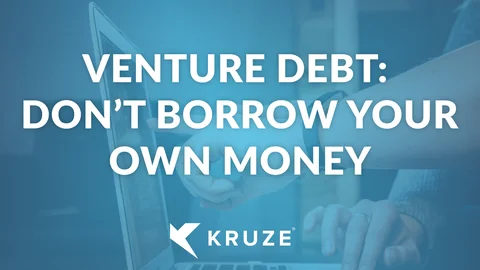
Startups that take venture debt don’t realize it can actually turn out to be a major problem.
It turns out they’re borrowing their own money, and it doesn’t do them any good down the road.
The only reason to take venture debt – or additional debt capital on top of your venture capital equity – is if you’re looking to extend the runway.
Extending the runway is the only thing that matters. It can give you the time you need to hit all of your milestones and raise a big round. Those milestones are critical to getting the next round of investors interested in your company.
So the only good reason to take on venture debt is to buy yourself time to hit milestones and negotiate a great deal.
Beware unscrupulous investors
Unfortunately, there are times when a less sophisticated team is exploited by a lender.
If they raise a large amount of equity, around $10 million, a bank or fund will offer them venture debt or incremental capital.
And then the term sheet comes in and they tell the startup they want them to draw down the money in the next six months, knowing they have 20 months of cash on hand.
And, so then you have 20 months of cash, but the latest you can draw this money down is six months from now. That means you’re going to make 14 payments back to the lender before you hit your cash-out date.
In fact, the debt will extend your cash-out date a little bit, even if you’re still borrowing your own money.
Most deals have 36 months of amortization with some interest, and maybe you make 15 payments back to the bank. If you do the math, you’ve paid a significant amount of the debt back by the time you hit your normal cash out date and actually are going to use the money.
That’s not a coincidence.
The lender wants you to do that. They’re trying to get off risk as quickly as possible. They’re collecting interest, and their ultimate goal is to get paid back.
This is the lending business.
As a founder, your goal should be to structure a term sheet that gives you a long forward commitment – that has you drawing the cash down closer to six months before the cash-out date, maybe even three months.
You do want to avoid cutting it too close in case an adverse event occurs for the company. Or you may fail the funding MAC requirement.
If you’re trying to maximize everything and not pay the money back for as long as possible, the safest thing to do is give yourself three to six months.
Avoid borrowing your own money
In order to avoid borrowing your own money, the best thing to do is structure something where you can draw the money out with six months of runway still remaining.
Otherwise, a huge amount of the cash you’re paying back is happening before you cash out day. Then you’re minimizing your runway extension. And you’re not getting any benefit from the debt.
Instead, you’re only helping the bank or lender make money along the way. They’re taking any risk and you’re not getting any benefit.
The bottom line is if you can’t get that forward commitment, then just don’t accept the debt because it’s not going to add enough runway to make it worth your while.
Be careful in what you sign and avoid borrowing your own money.
The other option is to raise some equity. Extension rounds are also popular on the equity side. It’s not a bad idea to raise more venture capital if you’re faced with the dilemma of having to borrow your own money.
The best deal is if you get a term sheet where you can draw down the future and it gives you a material runway extension. That’s a deal you want to sign.
If you have any other questions on venture debt or funding a startup, please contact us.











